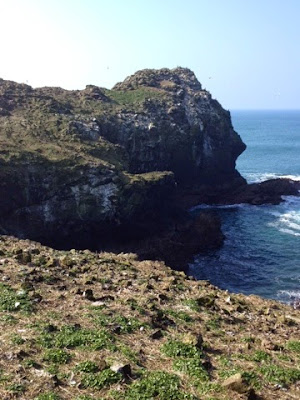So three of the group paddled out to Mullion Island (with an intrepid swimmer in tow), primarily to check how the Cormorants were doing. With our first Shag egg being a month earlier than in 2014, we'd half expected the Cormorants to be hatching by now. But what greeted us was a little bit disappointing...
 |
| The same area of the island in 2014, with numerous raised nest sites |
 |
| The white splats are a good indication of where the colony has now moved to |
And yes, whilst it was a nice and sunny day up top, our swimmer confirmed that the sea was still rather cold...




